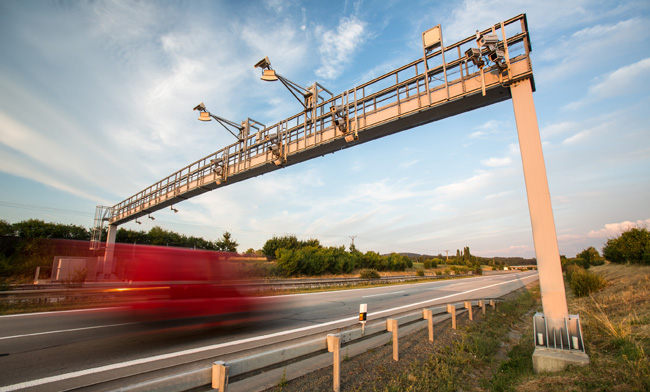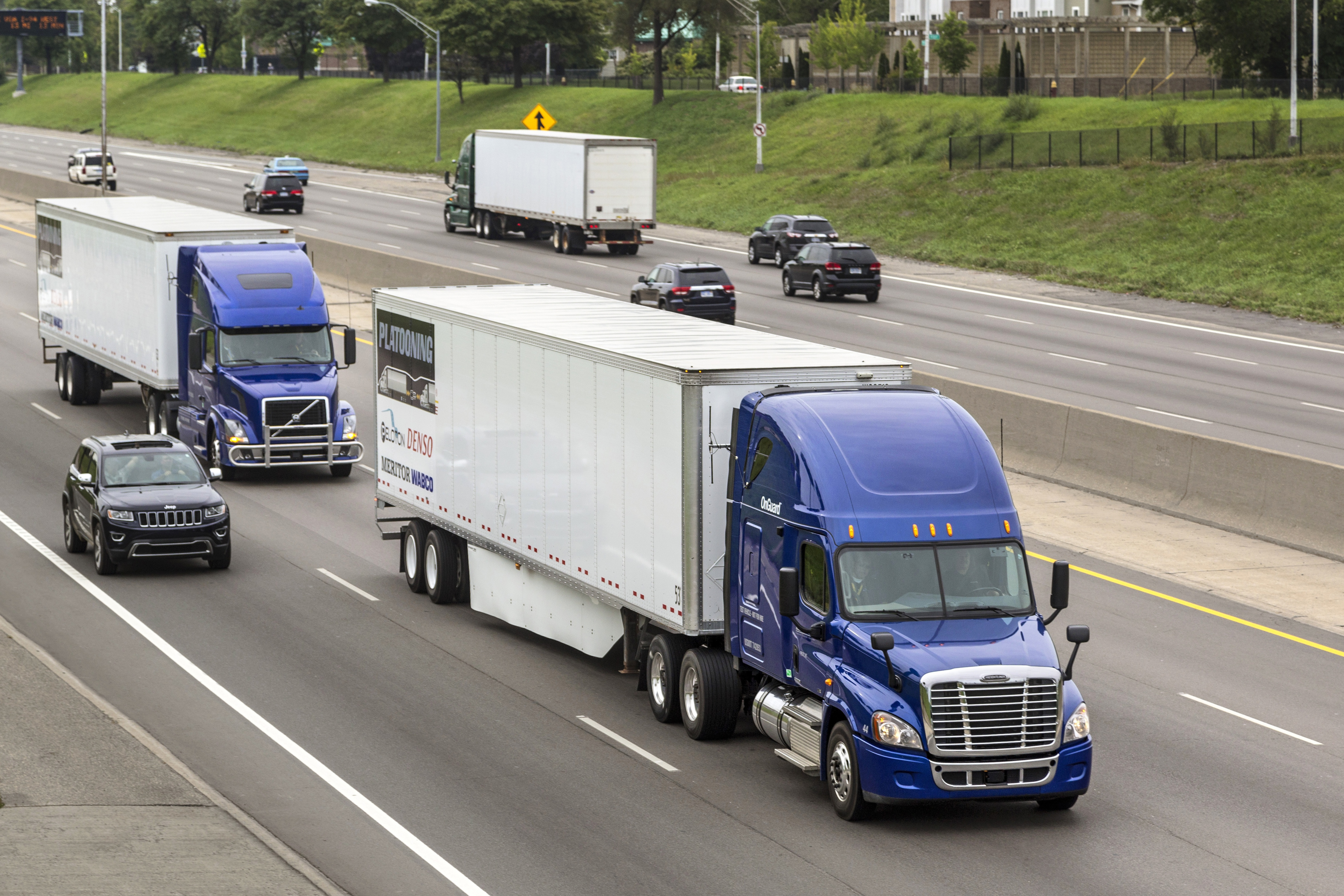
Building narrower freeway lanes to accommodate the enhanced route-tracking capabilities of connected and autonomous vehicles
(C/AVs), running in platoon conditions, could result in cost savings of £0.5 million (€0.56 million or US$6.5 million) for every km of road length built. Such benefits could be secured without any serious loss in the level of service available to road users as a whole.
These are among the key findings of a new study by the UK University of Southampton’s Transportation Research Group (TRG), reported at the July 2019 annual conference in Leeds of the Universities’ Transport Study Group (UTSG). It finds the current national highway cross-section standard ‘too conservative’ - particularly in terms of lane widths, which have to include an allowance for the lateral inaccuracies inherent in human-controlled driving.
There would also be important gains in safety, fuel economy and reduced CO2 emissions, according to lead researcher Hameed Jehanfo, a qualified civil engineer. Earlier studies in the field of C/AV highway provision have been based on existing design standards, or on roads built without taking into account vehicles’ close route- tracking capabilities.
Increased margin
The results showed the need for a margin of 10cm on either side of it, a figure then rounded up to generate an overall 2.80m width requirement for outer (nearside) dedicated C/AV lanes running alongside inner ones still conforming to the 3.65m standard (which already includes an allowance for the lateral inaccuracies of human-controlled driving).
The search for a real-life illustrative case study of the cost implications identified a 22km section of the planned Lower Thames Crossing, east of London, a freeway-standard link due to open in 2027 to relieve increasing pressure on an existing upstream river crossing. Earlier feasibility studies had identified the impracticability of widening this to accommodate a growing traffic load, much of it international.
The designated route of the new crossing includes provision for a number of horizontal and vertical lane centreline alignments, weaving sections, cuttings, embankments and bridges – all of these features adequately representative of the physical characteristics of typical existing freeways. This made it ideal, Jehanfo told ITS International, to support the central aim of the study in demonstrating the beneficial cost impacts of an alternative, “less onerous” geometric design. National road operator
To derive the hoped-for economies, the study then applied standard construction-industry bills of quantities techniques to calculate the materials, plant, labour and time-cost elements of contracts for building out both the standard and the C/AV-friendly versions. It used detailed engineering design drawings that HE had produced for use in a 2018 public consultation. The results appear in Table 1 (see opposite page).
Achieving savings
Further investigation has also made it possible to derive the prospects of achieving a 122 tonne savings in CO2 emissions over 10 years, with beneficial implications for the greenhouse gas issue. The European Union (EU) has formally identified C/AV use as a key element in governmental efforts to slow the rate of climate change, stressing its beneficial effects in delivering higher transport system efficiency.
As the Southampton research reports, US studies of platoons in which HGVs are running at short headways have shown important reductions in aerodynamic drag, a major contributor to fuel consumption, leading eventually to decreased emissions. Another beneficial effect is that platoon convoy speeds vary much less than those of normal traffic, by enabling vehicles moving at 1.4 second time gaps to move at optimal engine and fuel consumption speeds. On safety, the study goes on to identify the scope for accident savings worth £10.8 million over 10 years on the same 22km stretch of road (see Table 2, below).
Another issue concerns the impact, on the forecast gains, of the costs of installing and operating the necessary supporting roadside infrastructure – an issue that the TRG is dealing with via a programme of expert interviews. Already in the planning stage is the development of a simulation model, using commercially available software, to enable the assessment of the impact of the proposed C/AV road design on varying traffic levels. The hoped-for result is a decision-supporting kit.
Primary mode in US?
A study of the passenger car C/AV sector, carried out in the US within Ohio University’s Future Of Driving programme, sees driverless vehicles becoming ‘the primary mode’ of personal transport in the country by 2050, and making huge inroads into the US$160bn annual cost of traffic congestion. But, chiming with the Southampton initiative, it warns that their ability safely to share roads with human-driven traffic will need greater flexibility than current highway designs are allowing for.
Benefits that it predicts include reductions in urban traffic pressures thanks to the vehicles’ ability ‘objectively’ to pick the best routes, using modern computing techniques and accurate and up-to-date traffic flow and incident data to gain commuters in metropolitan areas nearly an hour a day in productive time. In New York’s Manhattan central business district, it suggests that a pool of 9,000 driverless cars could replace the current 13,000-strong taxi fleet (at the expense, of course, of the ousted cab drivers’ livelihoods).
In the process, the waiting time for a cab - once summoned - would fall from the typical current average of five minutes to just over half a minute; while the cost of the subsequent journey would drop to €3.125 per km (US$5 per mile). In terms of urban land take, an automated car would be able safely to manoeuvre in and out of parking bays that were 15% narrower than those of today. But the costs of acquiring such a vehicle, the university warns. will remain a deterrent while the current price of a Google-equipped car, if it were commercially available, would be around US$150,000.











